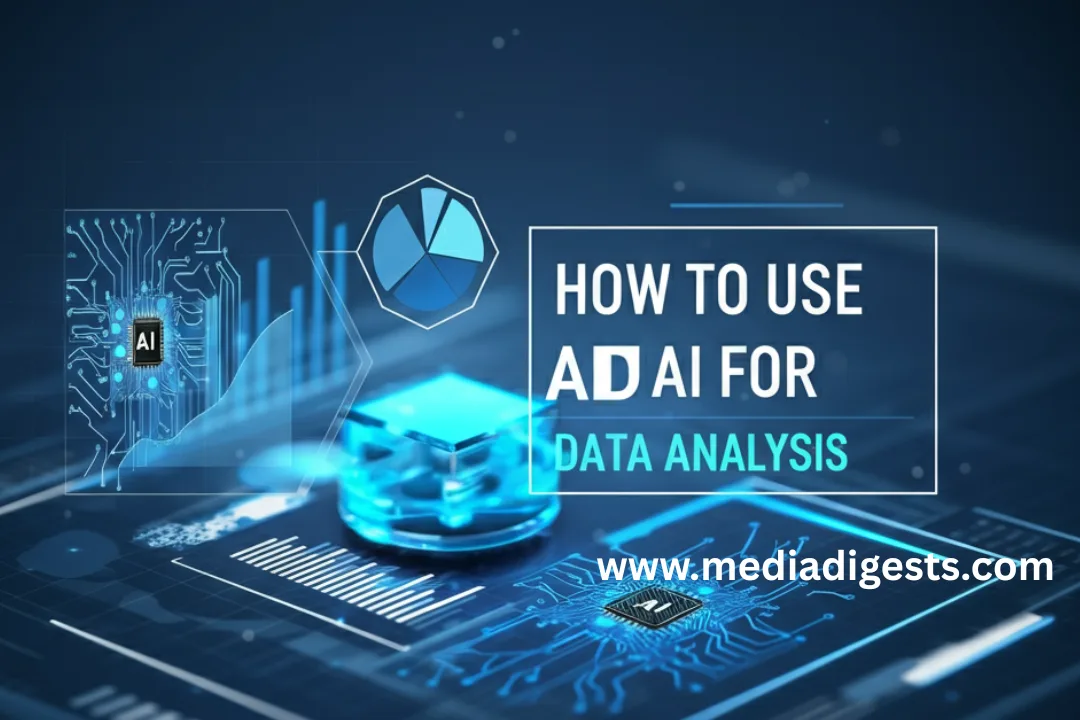Unlocking the true potential of your data can set your business apart in today’s fast-paced world. With the right approach, you can transform big piles of numbers into clear, actionable decisions. If you’ve ever wondered how to use AI for data analysis—or simply want to get more from your information—this guide will walk you through practical steps you can actually use, no matter your experience level. Let’s discover how smart tech can help you see the bigger picture and stay ahead of the curve.
The Value of Smart Data Analysis
Modern data analysis tools offer more than just crunching numbers. They can spot trends, pick up on patterns, and help you visualize what’s really happening in your market. By using automated data analysis, you make it easier to find key insights that help your business thrive. Instead of spending hours on spreadsheets, you can focus on what matters most: making choices that grow your company.
How to Get More from Your Data
Smarter tools let you dig deeper than traditional reports ever could. Think of it as having a digital assistant that never sleeps—turning mountains of information into clear, helpful advice. Using advanced data analysis approaches means you’ll catch new opportunities faster and avoid potential pitfalls.
Why Upgrade from Old Methods?
Classic reports only reveal what happened in the past. When you use modern data analysis software, you’re not just looking back—you’re looking ahead. This shift lets businesses prepare for changes, discover what customers really want, and sidestep risks before they become big problems.
Top Benefits of Using Modern Data Analysis
Switching to smarter data analysis comes with huge perks. You’ll see improvements not just in speed or accuracy, but in the very quality of your business decisions. Here’s why so many companies are making the change:
- Quick Answers: Get the information you need fast, often in real time.
- Accurate Insights: Lower the chance of human mistakes, giving you peace of mind.
- Better Predictions: Plan ahead with greater confidence, from inventory to marketing.
- Room to Grow: Your tools can keep up with your business as it expands.
Tools that Make Data Analysis Easy
There are many platforms designed to help you get started, whether you’re a tech pro or just comfortable with basic spreadsheets. Each one comes with its own strengths—from easy-to-use dashboards to powerful features for experts.
Some top choices include:
- Tableau: Turns data into attractive, interactive charts anyone can understand.
- Power BI: Connects your info from many sources and helps you uncover hidden patterns.
- RapidMiner: Offers an all-in-one space, where you can prepare, test, and share your insights.
- H2O.ai: Great for teams that want flexibility and lots of options without a high price tag.
Your First Steps Toward Smart Data Analysis
The thought of diving into a new system can be overwhelming. But you can start small—and still make a big impact. The secret is to focus on one business problem at a time.
Set Clear Goals
Consider where your business could most use a boost. Are you trying to boost customer loyalty? Make buying easier? Reduce waste? The more specific your goal, the easier it is to measure your progress.
Prepare for Success
Clean, well-organized data is the foundation of any success story. Sort out any duplicates and focus on the information that matters. Good results always start with solid groundwork.
The Right Tool for the Job
Whether you’re just starting out or looking to upgrade your current tools, pick software that fits your goals and team skills. Many systems offer how-to guides or built-in wizards to help beginners get comfortable.
Common Hurdles and How to Overcome Them
Switching to new data analysis tools isn’t always smooth sailing. Challenges like messy data, learning curves, and tight budgets can slow you down. To succeed:
- Start with small projects for quick wins.
- Invest time in basic training for your team.
- Build a feedback loop so you can keep improving.
Conclusion: Turn Information into Action
Smart data analysis is a game-changer for businesses ready to grow. The real goal isn’t just to collect more numbers—it’s to use them in ways that drive results. With a thoughtful approach, the right tools, and a spirit of curiosity, you can turn today’s data into tomorrow’s breakthroughs.
If you want to learn more about the basics of data analysis and best practices, check out this helpful guide from DataCamp.
Frequently Asked Questions
1. What’s the main reason to use modern data analysis tools?
They help you spot valuable patterns and trends that might otherwise go unnoticed, letting you make decisions faster and with confidence.
2. Can beginners use data analysis platforms without coding?
Yes! Many tools now have user-friendly dashboards and drag-and-drop features, so even non-technical users can start exploring data easily.
3. How does automated data analysis reduce errors?
By handling repetitive tasks and double-checking calculations, the software helps catch mistakes that people might miss during manual reviews.
4. What types of data work best for digital analysis?
You can analyze structured (numbers, tables) or unstructured data (reviews, emails), as long as it’s organized and relevant to your goals.
5. Is smart data analysis expensive?
Not always—many platforms offer flexible pricing, free versions, or pay-as-you-go options, so you can start small and scale as you grow.
You may also read: AI Content Creation Tools for Blogs: A Game Changer

